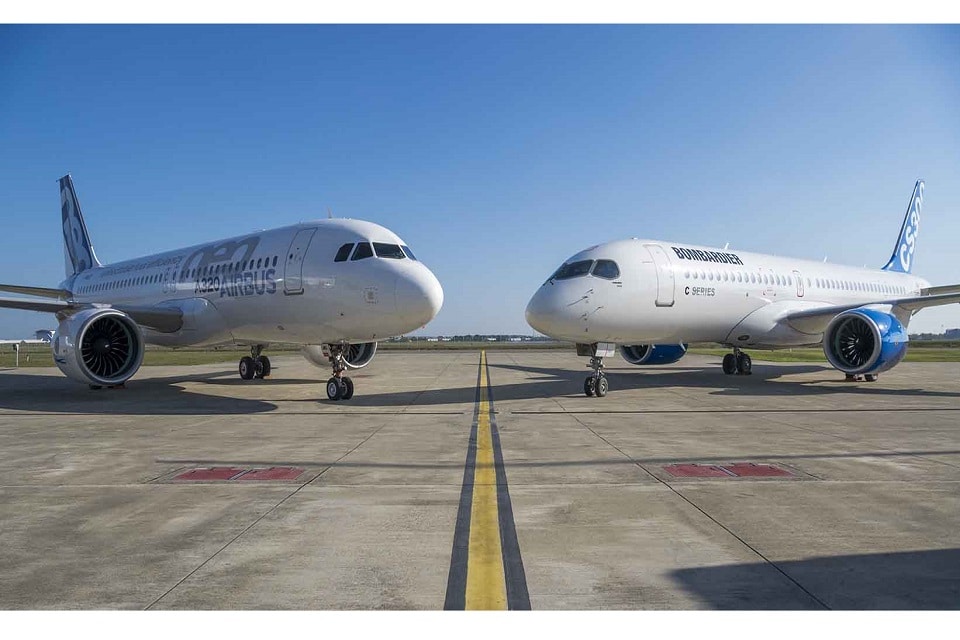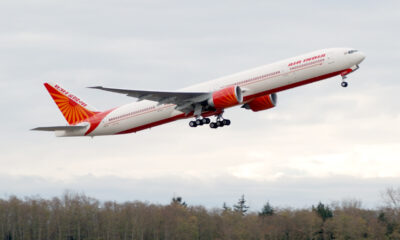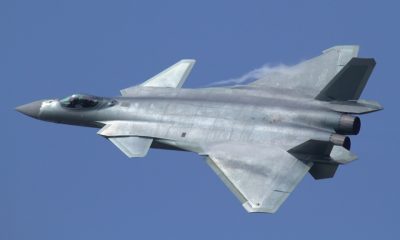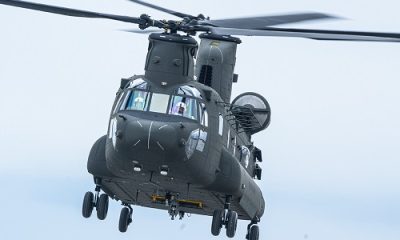Aviation
Airbus, Bombardier and Investissement Québec agree C Series Partnership closing effective July 1, 2018

Airbus, Bombardier and Investissement Québec agree C Series Partnership closing effective July 1, 2018
· Airbus to add A321 production capabilities in Toulouse
Airbus to acquire majority stake in the C Series Aircraft Limited Partnership, effective July 1, 2018
· All regulatory approvals required for the closing of the transaction Airbus, Bombardier and Investissement Québec agree C Series Partner been obtained
· Partnership head office, leadership team and primary final assembly line located in Mirabel, Québec (representing some 2,200 employees and subcontractors), with the support of the C Series global supply chain
· projected to represent 6,000 new aircraft over the next 20 years
· Addition of Airbus’ global reach to create significant value for C Series’ customers, suppliers, employees, shareholders and communities
· Significant C Series production efficiencies anticipated by leveraging Airbus’ production ramp-up expertise
· Growing market for C Series to support second Final Assembly Line in Alabama, serving U.S. customers
Amsterdam / Montreal, June 8, 2018 – Having received all required regulatory approvals, Airbus SE (EPA: AIR), Bombardier Inc. (TSX: BBD.B) and Investissement Québec (IQ) have agreed to close the C Series transaction effective on July 1, 2018. Airbus to acquire majority stake in the C Series Aircraft Limited PartnershipThe transaction by which Airbus will acquire a majority stake in the C Series Aircraft Limited Partnership (CSALP) was initially announced in October 2017. The Mirabel-based partnership, which was originally established between Bombardier and IQ, will benefit from Airbus’ global reach, scale, procurement organization and expertise in selling, marketing and producing the C Series – a state-of-the-art jet aircraft family in the 100-150 seat market.
Airbus will work with its partners Bombardier and IQ to fully unlock the C Series’ potential and create significant new value for customers, suppliers, employees, shareholders and the communities in which the partnership operates. The partnership’s head office, primary assembly line and related functions will be based in Mirabel, Québec.
As previously announced, Bombardier will continue with its current funding plan of CSALP. Due to the early closing of the partnership, the terms of this plan are updated according to the following schedule: Bombardier will fund the cash shortfalls of CSALP, if required, during the second half of 2018, up to a maximum of US$225 million; during 2019, up to a maximum of US$350 million; and up to a maximum aggregate amount of US$350 million over the following two years, in consideration for non-voting participating shares of CSALP with cumulative annual dividends of 2%. Any excess shortfall during such periods will be shared proportionately amongst CSALP’s Class A shareholders. Airbus will consolidate CSALP effective from July 1, 2018 onwards. Further financial information on the transaction will be provided later this year.
The C Series program continues to ramp up. Having delivered 17 aircraft in 2017, it is gearing up to double its deliveries in 2018.
With the C Series’ demonstrated in-service performance and the finalization of this partnership, the parties expect increased demand to support a second C Series Final Assembly Line in Mobile, Alabama, dedicated to supplying U.S.-based customers. The C Series is positioned to capture a large percentage of the estimated 6,000 aircraft needed in this market segment over the next 20 years.

Aviation
Boeing, Antonov to Collaborate on Defense Projects

– MOU represents Boeing’s commitment to work with Ukrainian industry
– Includes exploring opportunities for collaborating on in-country support of Unmanned Aerial Systems
A Memorandum of Understanding was signed today by Boeing and Antonov Company to investigate potential collaboration on defense-related projects.
“We’re happy to keep collaborating with the Antonov Company to help Ukraine’s economic development and expansion,” stated Ted Colbert, CEO and president of Boeing Defence, Space, & Security.
Airbus and the Antonov An-225: The Best Partnership:Click here
“This agreement demonstrates our ongoing efforts to find more opportunities to work with Ukrainian industry, which was underscored by our signing of the Ukrainian Defence Industry Compact earlier this year.”
The areas of potential collaboration identified in the agreement consist of training, logistical support and overhaul services for tactical Unmanned Aerial Systems utilized by the Ukrainian Armed Forces, which includes the ScanEagle. In addition, the companies will also explore opportunities for Antonov to provide engineering support to Boeing.
The six largest cargo aircraft ever built in the aviation industry:Click here
“A strong, innovative, and efficient defense industry is key to sustainable economic development and national security, and we are extremely excited to collaborate with Boeing,” said Ievhen Gavrylov, CEO of Antonov Company.
This agreement brings a whole new level of opportunity to implement the latest and most effective solutions – in addition to the possibility of future projects with Boeing in the aerospace and defense industry.”
-

 Travel1 week ago
Travel1 week agoAir India to Expand US Operations with Three New Routes After a Decade
-

 Travel2 weeks ago
Travel2 weeks agoWhy We Should Avoid These Stamps in a Passport
-

 Airlines1 month ago
Airlines1 month agoInvestigations Reveal Fake Chinese Titanium in Boeing and Airbus Jets
-

 Tech4 weeks ago
Tech4 weeks agoChina’s CATL Plans 1,800-Mile Electric Plane Launch by 2027
-

 Airport3 days ago
Airport3 days agoTop 10 Largest Airports in the World by Size
-

 Aerospace4 weeks ago
Aerospace4 weeks agoChina’s Fighter Jets Turn Wings into Autonomous Drones
-

 Airlines4 days ago
Airlines4 days agoAir India Rolls Out A350s for Delhi-New York JFK and Newark Routes
-

 Defence3 weeks ago
Defence3 weeks agoBoeing Enhances Chinook with New Engines and Block II Upgrades at $96 Million







